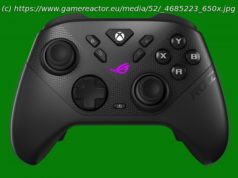Smart refinements to the M10 design, plus a new 60MP sensor
For decades, Leica has avoided drastic redesigns to its M lineup of rangefinder cameras, instead focusing on subtle refinements from generation to generation. With the M11 ($8,995, body only), Leica stays true to that strategy; the latest M entry retains the classic look of its predecessors while benefitting from a few handling and imaging improvements. Although some aspects of the camera still feel slightly anachronistic—it requires manual focus and can’t record video—its high-resolution imaging engine is as modern as it gets. Further, the continuity in design and philosophy is welcoming to photographers who have used Leicas for years and offers a window into the past for younger shutterbugs who are scrabbling to buy their first M. I’ve been working with a preproduction M11 ahead of its announcement, and even though image quality isn’t yet finalized, the camera is every bit a pleasure to use as those in the M10 series. A Refined M10 The Leica M10 made waves by slimming a few millimeters of depth off of previous digital efforts to perfectly match the lines of analog models, including the most recent M-A. The M10 went as far as to include a clever ISO control that matched the position of the film rewind button. But the M10 body design is now five years old, so Leica refreshed the design again. The ISO control dial, introduced in the M10, continues The M11 keeps the same dimensions as the M10, measuring 3.2 by 5.5 by 1.2 inches (HWD). The exterior matches that of the original M3, which first went on sale in 1954, a form that should appeal to longtime M users. Some earlier digital efforts, such as the M8, M9, and M (Typ 240), are slightly thicker than the film bodies, which was a sticking point for some rangefinder photographers. The weight varies based on your choice of color. The silver chrome edition has a brass top plate and is as heavy as an M10, about 1.4 pounds. The black edition, which I received for testing, uses anodized aluminum instead, making it 20% lighter at 1.2 pounds. The fixed baseplate affords quick battery swaps and USB-C charging The other changes are on the bottom. The M11 (finally) drops the quirky removable baseplate design, a vestigial remnant that carried on from bottom-loading film cameras. It’s now easy to swap the battery; simply pop out the metal latch to access it and the UHS-II SD card slot. The M11 includes 64GB of internal storage and has a USB-C port on the bottom for wired transfers and charging. An external wall charger is included, too. Leica Summilux-M 35mm F1.4 ASPH. (FLE), f/1.4,1/160-second, ISO 125 Despite putting the port on the bottom, the M11 retains the same level of dust and splash protection as the M10. The camera isn’t IP certified and you shouldn’t use it during a downpour, but it can likely survive moderate precipitation. If you’re after a better-protected Leica, the SL2 and SL2-S carry an IP54 rating for dust and water ingress. Straightforward Controls The basic design of the M series hasn’t changed much over the years. The M11 keeps the top plate clean—a shutter release and an on/off toggle sit alongside discrete dial controls for shutter and ISO. A top function button, last seen on the Typ 240, returns. Its function is flexible—the button activates a live view focus magnification aid by default, but you can remap its function easily via a long press. The shutter button is threaded and works with a mechanical release cable or a soft release button. Leica moved the function button from the front of the M10 to the top plate on the M11 The shutter speed is a carryover from film bodies. The M11’s mechanical shutter is very quiet and can fire as quickly as 1/4,000-second; it syncs with an external flash at speeds of up to 1/180-second. The body also includes a fully electronic shutter function. It fires as quickly as 1/16,000-second, which is good news for Noctilux fans who don’t want to deal with neutral density filters for F0.95 imaging. The electronic shutter is absolutely silent, a plus when working in concert halls, film sets, and other venues where noise is verboten. A lower base ISO is also beneficial for working at wider apertures in bright light. The M11 starts at ISO 64. The ISO dial is on the left side of the top plate, in the same position as the film rewind button on analog M bodies. It offers quick settings as high as ISO 6,400, has an „M“ position to set higher values via the camera menu, as well as an „A“ position for Auto ISO imaging. You can set a minimum shutter speed if you’d like, too. The M11 doesn’t feature any sort of sensor stabilization, so Leica programs in a 1/4x focal length minimum to sidestep shake-induced blur by default—the default value is adjustable, so you can set it to 1/1,1/2, or a fixed minimum shutter speed if you prefer. Menus now match Leica’s SL2 and Q2 cameras for a consistent experience across systems Leica keeps the same three-button rear layout from the M10 series for the M11. Play, Fn, and Menu buttons sit to the left of the fixed touch LCD. The menu system has changed, however, and now matches that of the SL2 and Q2 family. A representative from the company says that the change benefits photographers who use more than one type of Leica. The Fn button’s function is customizable—it toggles live view by default, but you can reconfigure it via a long press. The menu system is split between a single-screen menu and a more verbose multi-page text system. The single-screen menu shows exposure settings and has a fixed,12-slot control bank for access to the most commonly used options, including color, JPG and Raw capture options, metering and drive modes, and memory card formatting. Leica Summilux-M 50mm F1.4 ASPH., f/1.4,1/1,000-second, ISO 64 The menu is navigable via touch or using the four-way controller on the rear. Press the menu button twice or tap the three-bar icon in the bottom right corner of the screen to access the five-page text menu; you need to use the d-pad to move through it.






